For centuries, fishing was Barking’s most important industry. Its fishermen fished the high seas off Doggerbank and the coast of Iceland. If you shorten ‘Doggerbank’ and join it to ‘Barking’, you end up with the name of this Wetherspoon pub.
Framed text about The Ancient Fair at Barking.
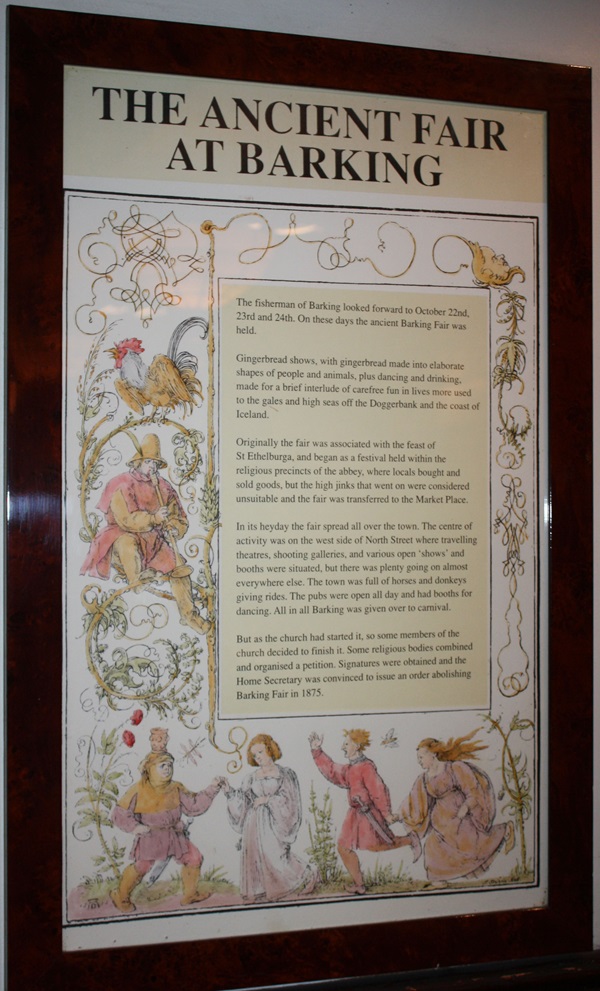
The text reads: The fisherman of Barking looked forward to October 22nd, 23rd and 24th. On these days the ancient barking Fair was held.
Gingerbread shows, with gingerbread made into elaborate shapes of people and animals, plus dancing and drinking, made for a brief interlude of carefree fun in lives more used to the gales and high seas off the Doggerbank and the coast of Iceland.
Originally the fair was associated with the feast of St Ethelburga, and began as a festival held within the religious precincts of the abbey, where locals bought and sold goods, but the high jinks that went on were considered unsuitable and the fair was transferred to the Market Place.
In its heyday the fair spread all over the town. The centre of activity was on the west side of North Street where travelling theatres, shooting galleries, and various open ‘shows’ and booths were situated, but there was plenty going on almost everywhere else. The pubs were open all day and had booths for dancing. All in all Barking was given over to carnival.
But as the church had started it, so some members of the church decided to finish it. Some religious bodies combined and organised a petition. Signatures were obtained and the Home Secretary was convinced to issue an order abolishing Barking Fair in 1875.
Framed illustrations and text about Barking.
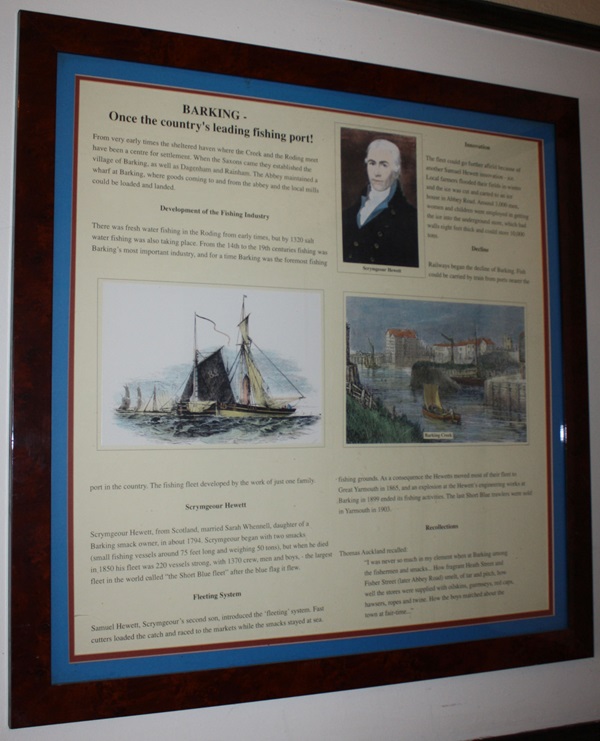
The text reads: From very early times the sheltered haven where the Creek and the Roding meet have been a centre for settlement. When the Saxons came they established the village of Barking, as well as Dagenham and Rainham. The Abbey maintained a wharf at Barking, where goods coming to and from the abbey and the local mills could be loaded and landed.
There was fresh water fishing in the Roding from early times, but by 1320 salt water fishing was also taking place. From the 14th to the 19th centuries fishing was Barking’s most important industry, and for a time Barking was the foremost fishing port in the country. The fishing fleet developed by the work of just one family.
Scrymgeour Hewett, from Scotland, married Sarah Whennell, daughter of a Barking smack owner, in about 1794. Scrymgeour began with two smacks (small fishing vessels around 75 feet long and weighing 50 tons), but when he died in 1850 his fleet was 220 vessels strong, with 1370 crew, men and boys, - the largest fleet in the world called “the Short Blue fleet” after the blue flag it flew.
Samuel Hewett, Scrymgeour’s second son, introduced the ‘fleeting’ system. Fast cutters loaded the catch and raced to the markets while the smacks stayed at sea.
The fleet could go further afield because of another Samuel Hewett innovation – ice. Local farmers flooded their fields in winter and the ice was cut and carted to an ice house in Abbey Road. Around 3,000 men, women and children were employed in getting the ice into the underground store, which had walls eight feet thick and could store 10,000 tons.
Railways began the decline of Barking. Fish could be carried by train from ports nearer the fishing grounds. As a consequence the Hewetts moved most of their fleet to Great Yarmouth in 1865, and an explosion at the Hewett’s engineering works at Barking in 1899 ended its fishing activities. The last Short Blue trawlers were sold in Yarmouth in 1903.
Thomas Auckland recalled: “I was never so much in my element when at Barking among the fisherman and smacks… How fragrant Heath Street and Fisher Street (later Abbey Road) smelt, of tar and pitch, how well the stores were supplied with oilskins, guernseys, red caps, hawsers, ropes and twine. How the boys marched about the town at fair-time…”
Framed illustrations and text about the Roman invasions.
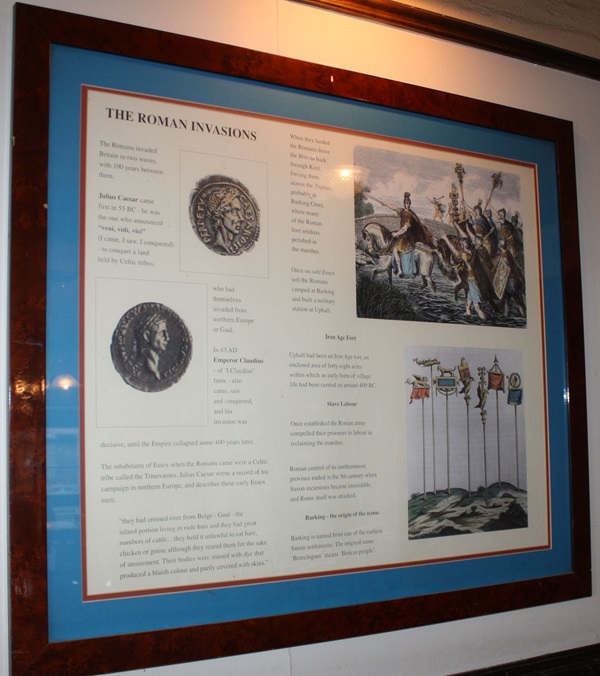
The text reads: The Romans invaded Britain in two waves, with 100 years between them.
Julius Caesar came first in 55 BC – he was the one who announced “veni, vidi, vici” (I came, I saw, I conquered) – to conquer a land held by Celtic tribes, who had themselves invaded from northern Europe or Gaul.
In 43 AD Emperor Claudius – of ‘I Claudius’ fame – also came, saw and conquered, and his invasion was decisive, until the Empire collapsed some 400 years later.
The inhabitants of Essex when the Romans came were a Celtic tribe called the Trinovantes. Julius Caesar wrote a record of his campaign in northern Europe, and describes these early Essex men:
“they had crossed over from Belge – Gaul – the inland portion living in rude huts and they had great numbers of cattle… they held it unlawful to eat hare, chicken or goose although they reared them for the sake of amusement. Their bodies were stained with dye that produced a bluish colour and partly covered with skins.”
When they landed the Romans drove the Britons back through Kent, forcing them across the Thames, probably at Barking Creek, where many of the Roman foot soldiers perished in the marshes.
Once on safe Essex soil the Romans camped at Barking and built a military station at Uphall. Uphall had been an Iron age fort, an enclosed area of forty-eight acres within which an early form of village life had been carried on around 400 BC.
Once established the Roman army compelled their prisoners to labour in reclaiming the marshes. Roman control of its northernmost province ended in the 5th century when Saxon incursions became irresistible, and Rome itself was attacked.
Barking is named from one of the earliest Saxon settlements. The original name ‘Berecingum’ means ‘Bericas people’.
Framed illustrations and text about Barking Abbey.
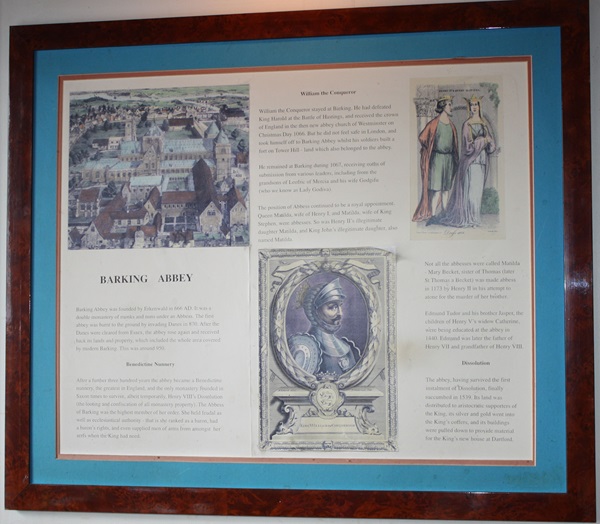
The text reads: Barking Abbey was founded by Erkenwald in 666 AD. It was a double monastery of monks and nuns under an Abbess. The first abbey was burnt to the ground by invading Danes in 870. After the Danes were cleared from Essex, the abbey rose again and received back its lands and property, which included the whole area covered by modern Barking. This was around 950.
After a further three hundred years the abbey became a Benedictine nunnery, the greatest in England, and the only monastery founded in Saxon times to survive, albeit temporarily, Henry VIII’s Dissolution (the looting and confiscation of all monastery property). The Abbess of Barking was the highest member of her order. She held feudal as well as ecclesiastical authority – that is she ranked as a baron, had a baron’s rights, and even supplied men of arms from amongst her serfs when the King had need.
William the Conqueror stayed at Barking. He had defeated King Harold at the Battle of Hastings, and received the crown of England in the then new abbey church of Westminster on Christmas Day 1066. But he did not feel safe in London, and took himself off to Barking Abbey whilst his soldiers built a fort on Tower Hill – land which also belonged to the abbey.
He remained at Barking during 1067, receiving oaths of submission from various leaders, including from the grandsons of Leofric of Mercia and his wife Godgifu (who we know as Lady Godiva).
The position of Abbess continued to be a royal appointment. Queen Matilda, wife of Henry I, and Matilda, wife of King Stephen, were abbesses. So was Henry II’s illegitimate daughter Matilda, and King John’s illegitimate daughter, also named Matilda.
Not all the abbesses were called Matilda – Mary Becket, sister of Thomas (later St Thomas a Becket) was made abbess in 1173 by Henry II in his attempt to atone for the murder of her brother.
Edmund Tudor and his brother Jasper, the children of Henry V’s widow Catherine, were being educated at the abbey in 1440. Edmund was later the father of Henry VII and grandfather of Henry VIII.
The abbey, having survived the first instalment of Dissolution, finally succumbed in 1539. Its land was distributed to aristocratic supporters of the King, its silver and gold went into the King’s coffers, and its buildings were pulled down to provide material for the King’s new house at Dartford.
Framed prints and text about the Fanshawe family.
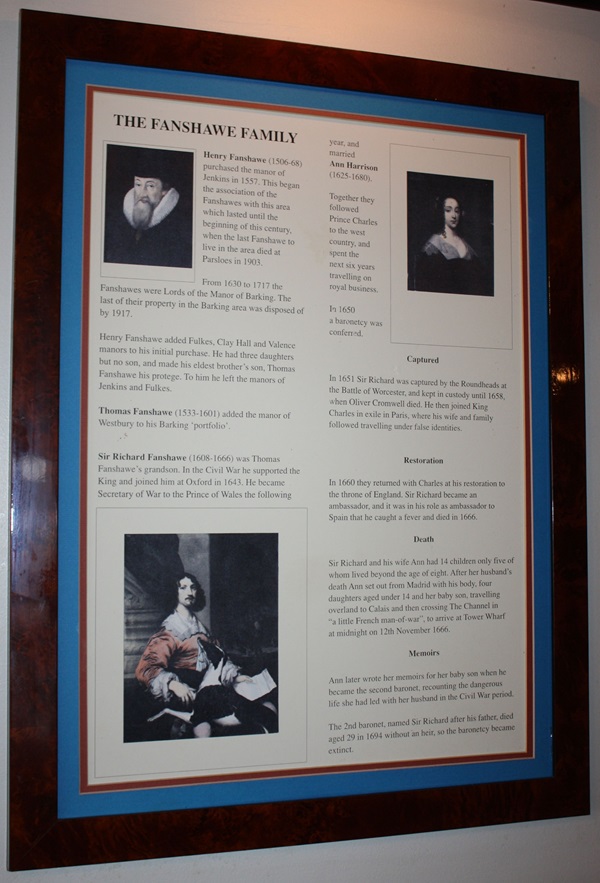
The text reads: Henry Fanshawe (1506-68) purchased the manor of Jenkins in 1557. This began the association of the Fanshawes with this area which lasted until the beginning of this century, when the last Fanshawe to live in the area died at Parsoles in 1903.
From 1630 to 1717 the Fanshawes were Lords of the manor of Barking. The last of their property in the Barking area was disposed of by 1917.
Henry Fanshawe added Fulkes, clay Hall and Valence manors to his initial purchase. He had three daughters but no son, and made his eldest brother’s son, Thomas Fanshawe his protégé. To him he left the manors of Jenkins and Fulkes.
Thomas Fanshawe (1533-1601) added the manor of Westbury to his Barking ‘portfolio’.
Sir Richard Fanshawe (1608-1666) was Thomas Fanshawe’s grandson. In the Civil War he supported the King and joined him at Oxford in 1643. He became Secretary of War to the Prince of Wales the following year, and married Ann Harrison (1625-1680).
Together they followed Prince Charles to the west country, and spent the next six years travelling on royal business.
In 1650 a baronetcy was conferred.
In 1651 Sir Richard was captured by the Roundheads at the Battle of Worcester, and kept in custody until 1658, when Oliver Cromwell died. He then joined King Charles in exile in Paris, where his wife and family followed travelling under false identities.
In 1660 they returned with Charles at his restoration to the throne of England. Sir Richard became an ambassador, and it was in his role as ambassador to Spain that he caught a fever and died in 1666.
Sir Richard and his wife Ann had 14 children only five of whom lived beyond the age of eight. After her husband’s death Ann set out from Madrid with his body, four daughters aged under 14 and her baby son, travelling overland to Calais and then crossing The Channel in “a little French man-of-war”, to arrive at Tower Wharf at midnight on 12th November 1666.
Ann later wrote her memoirs for her baby son when he became the second baronet, recounting the dangerous life she had led with her husband in the Civil war period.
The 2nd baronet, named Sir Richard after his father, died aged 29 in 1694 without an heir, so the baronetcy became extinct.
Framed prints and text about socialist pioneers from Barking.
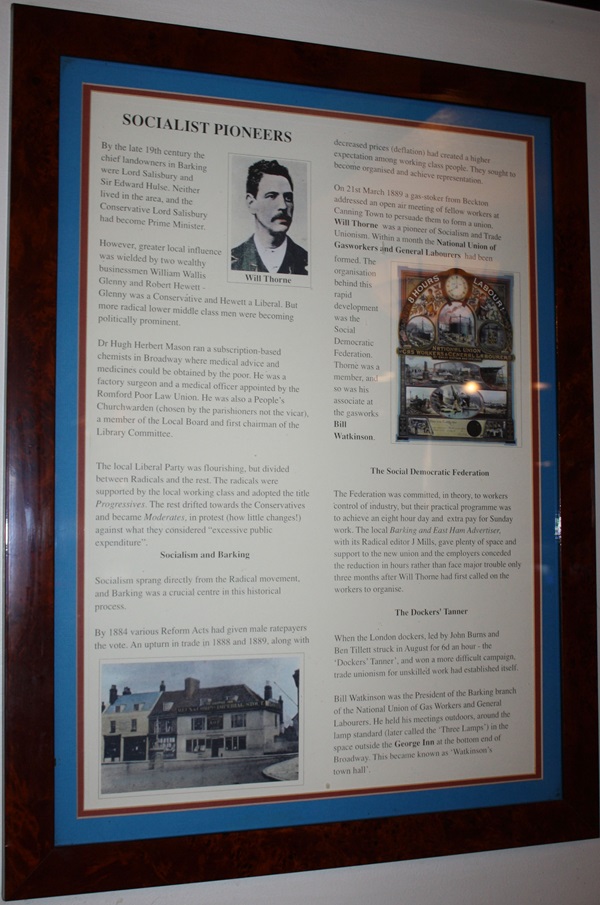
The text reads: By the late 19th century landowners in Barking were Lord Salisbury and Sir Edward Hulse. Neither lived in the area, and the Conservative Lord Salisbury had become Prime Minister.
However, greater local influence was wielded by two wealthy businessmen William Wallis Glenny and Robert Hewett – Glenny was a conservative and Hewett a Liberal. But more radical lower class men were becoming politically prominent. Dr Hugh Herbert Mason ran a subscription-based chemist in Broadway where medical advice and medicines could be obtained by the poor. He was a factory surgeon and a medical officer appointed by the Romford Poor Law Union. He was also a People’s Churchwarden (chosen by the parishioners not the vicar), a member of the Local Board and first chairman of the Library Committee.
The local Liberal Party was flourishing, but divided between Radicals and the rest. The radicals were supported by the local working class and adopted the title Progressives. The rest drifted towards the Conservatives and became Moderates, in protest (how little changes!) against what they considered “excessive public expenditure”.
Framed prints and text about Captain Cook.
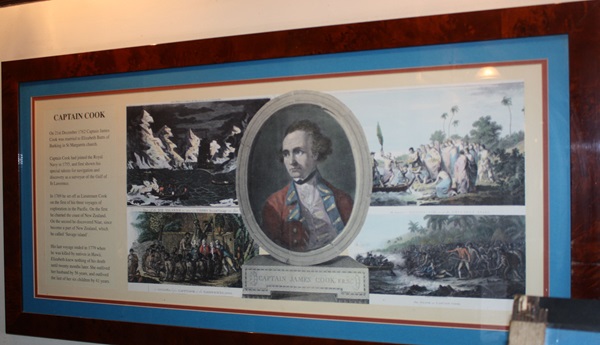
The text reads: On 21st December 1762 Captain James Cook was married to Elizabeth Batts of Barking in St Margaret’s church.
Captain Cook had joined the Royal Navy in 1755, and first shown his special talents for navigation and discovery as a surveyor of the Gulf of St Lawrence.
In 1769 he set off as Lieutenant Cook on the first of his three voyages of exploration in the Pacific. On the first he charted the coast of New Zealand. On the second he discovered Niue, since becoming a part of New Zealand, which he called ‘Savage Island’.
His last voyage ended in 1779 when he was killed by natives in Hawii. Elizabeth knew nothing of his death until twenty months later. She outlived her husband by 56 years, and outlived the last of her six children by 41 years.
Framed photographs and text about Kier Hardie and Will Thorne.
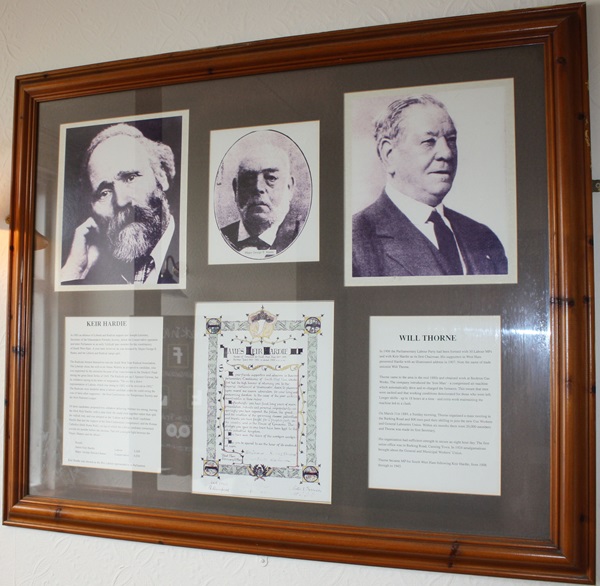
The text reads: Kier Hardie
In 1885 an alliance of Liberal and Radical support saw Joseph Leicester, Secretary of the Glassmakers Friendly Society, defeat his Conservative opponent and enter Parliament as an early ‘Lib/Lab’ pact member for the constituency of South West Ham. A year later, however, he was defeated by Major George E. Banes, and the Liberal and Radical Campus split.
The Radicals formed themselves into the South West Ham Radical Association. The Liberals chose the well-to-do Hume Webster as prospective candidate, who was supported by the unionists because of his contributions to the Dockers’ Fund during the great Dock Strike of 1889. The Radicals put up J. Spencer Curwen, but he withdrew saying in his letter of resignation, “The cry for a direct representation of Labour, which was strong in 1885, will be revived in 1892”. The Radicals were doubtful about a labour candidate unless he could swing the vote of the vote of their other supporters – the Non-Conformists, the Temperance Society and the Irish National League.
Of three candidates proposed two withdrew believing Webster too strong, leaving the third, Keir Hardie, with a clear field. He could weld together rather than split the radical vote, and was adopted as the ‘Labour and Home Rule’ candidate. Hardie thus had the support of the Non-Conformists (temperance) and the Roman Catholics (Irish Home Rule), on top of which the Liberal candidate committed suicide six months before the election. This left a straight fight between ‘Major (banes) and the Miner’ –
Result:
James Keir Hardie, Labour, 5,268
Major George Edward Barnes, Conservative, 4,036
Kier Hardie was elected as the first Labour representative in Parliament.
Will Thorne
In 1906 the Parliamentary Labour Party had been formed with 30 Labour MPs and with Kier Hardie as its first Chairman. His supporters in West Ham presented Hardie with an illuminated address in 1907. Note the name of trade unionist Will Thorne.
Thorne came to the area in the mid-1880s and obtained work at Beckton Gas Works. The company introduced the ‘Iron Man’’ – a compressed air machine which automatically drew and re-charged the furnaces. This meant that men were sacked and that working conditions deteriorated for those who were left. Longer shifts – up to 18 hours at a time- and extra work maintaining the machine led to a clash.
On March 31st 1889, a Sunday morning, Thorne organised a mass meeting in the Barking Road and 800 men paid their shilling to join the new Gas Workers and General Labourers Union. Within six months there were 20,000 members and Thorne was made its first Secretary.
His organisation had sufficient strength to secure an eight hour day. The union office was in Barking Road, Canning Town. In 1924 amalgamations brought about the General and Municipal Workers’ Union.
Thorne became MP for South West Ham following Keir Hardie, from 1906 through to 1945.
A framed photograph and text about Vera Lynn.
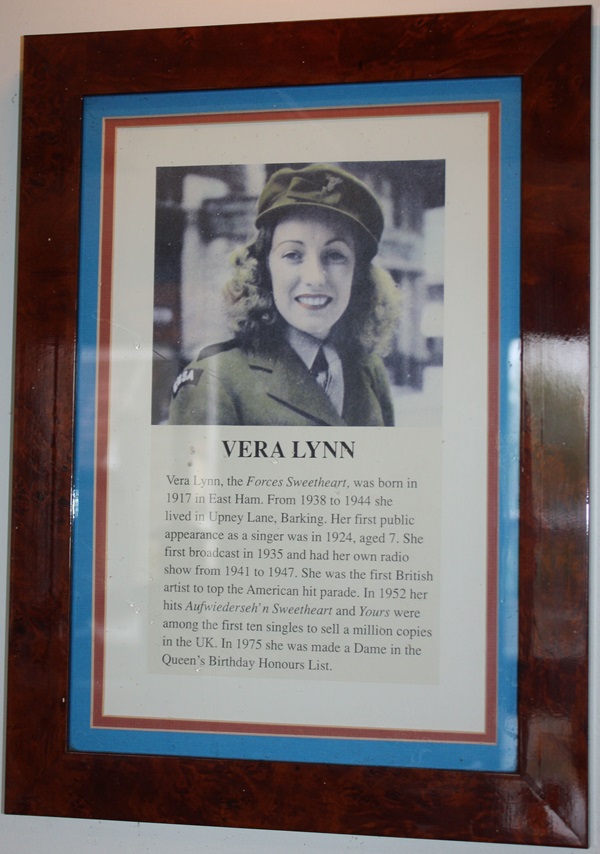
The text reads: Vera Lynn, the Forces Sweetheart, was born in 1917 in East Ham. From 1938 to 1944 she lived in Upney Lane, Barking. Her first public appearance as a singer was in 1924, aged 7. She first broadcast in 1935 and had her own radio show from 1941 to 1947. She was the first British artist to top the American hit parade. In 1952 her hits Aufwiederseh’ n Sweetheart and Yours were among the first ten singles to sell a million copies in the UK. In 1975 she was made a Dame in the Queen’s Birthday Honours List.
A framed photograph of East Street, Barking c1920.
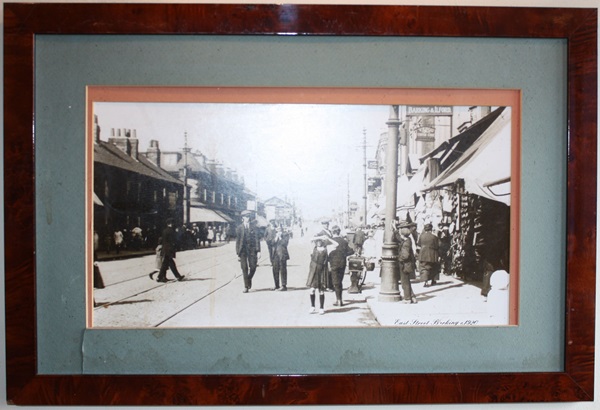
A framed photograph of the Barking Congregational Band of Hope.
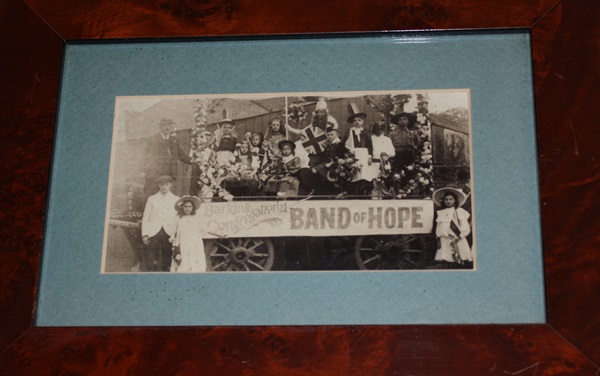
A framed drawing of The Round House – a piece of old East Ham.
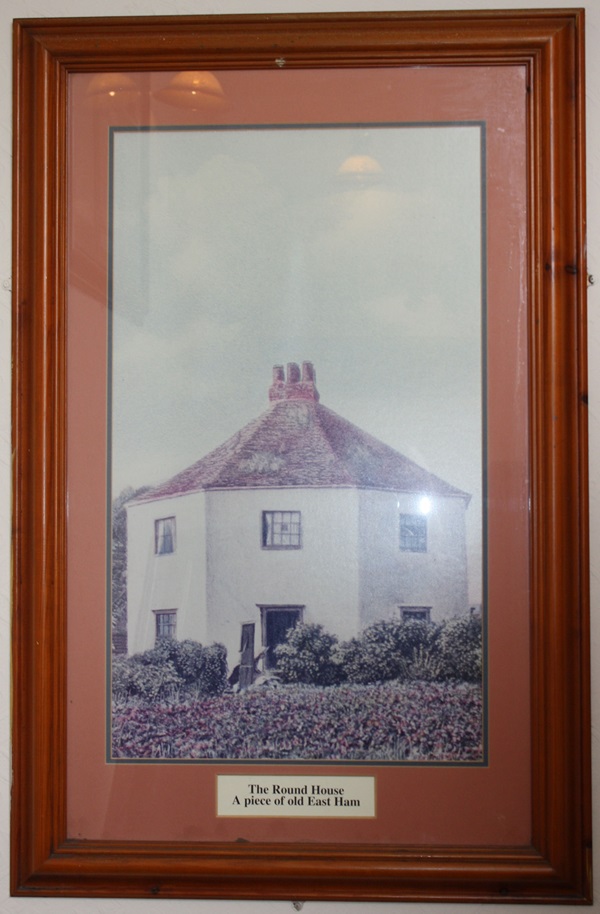
An external view of the pub – main entrance.
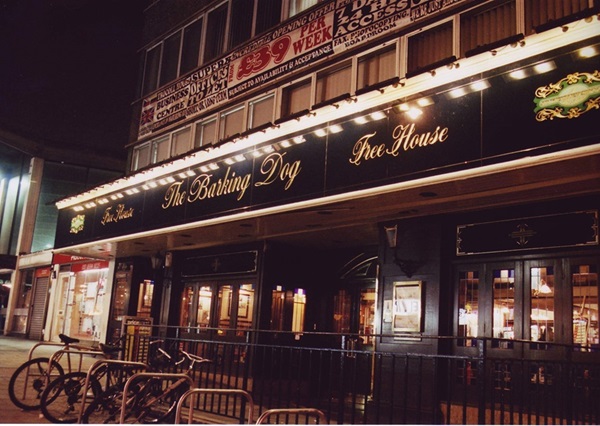
If you have information on the history of this pub, then we’d like you to share it with us. Please e-mail all information to: pubhistories@jdwetherspoon.co.uk